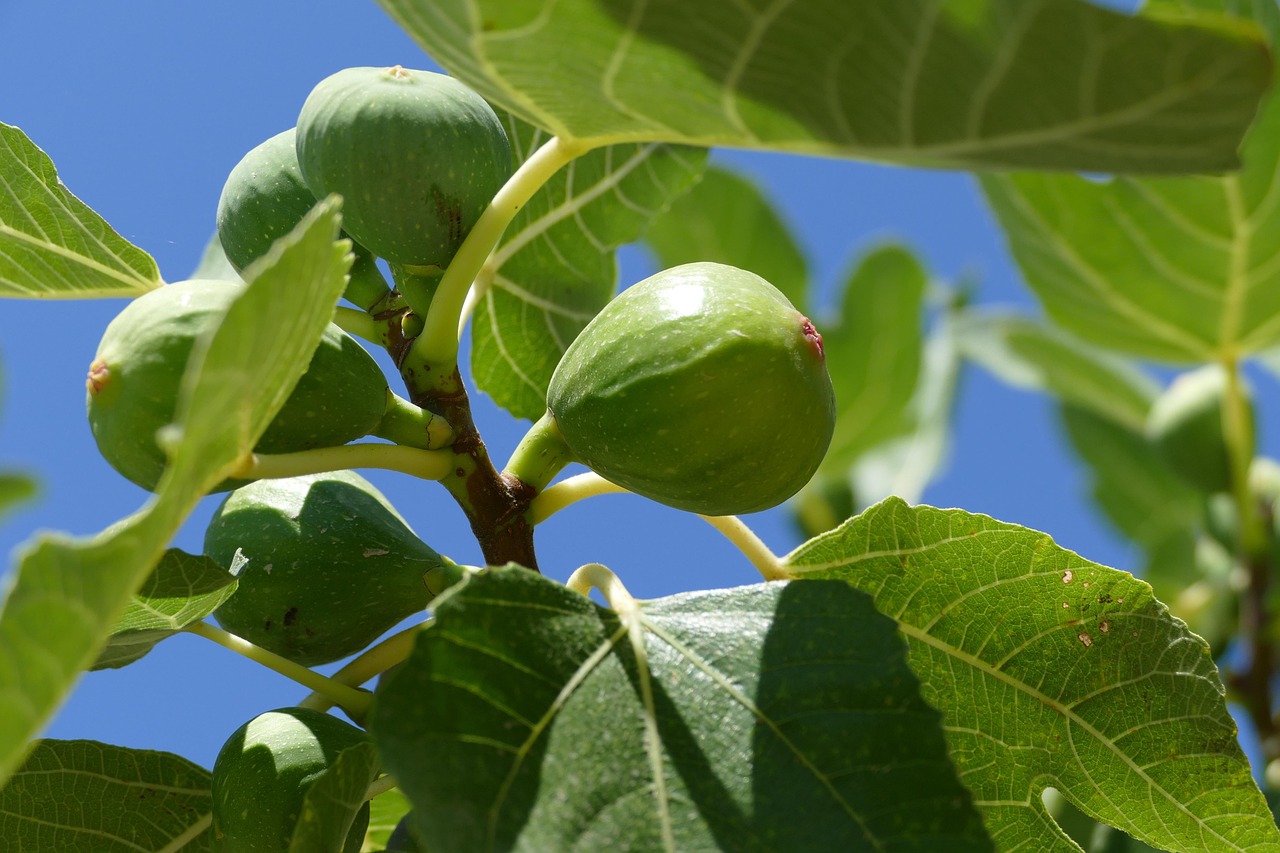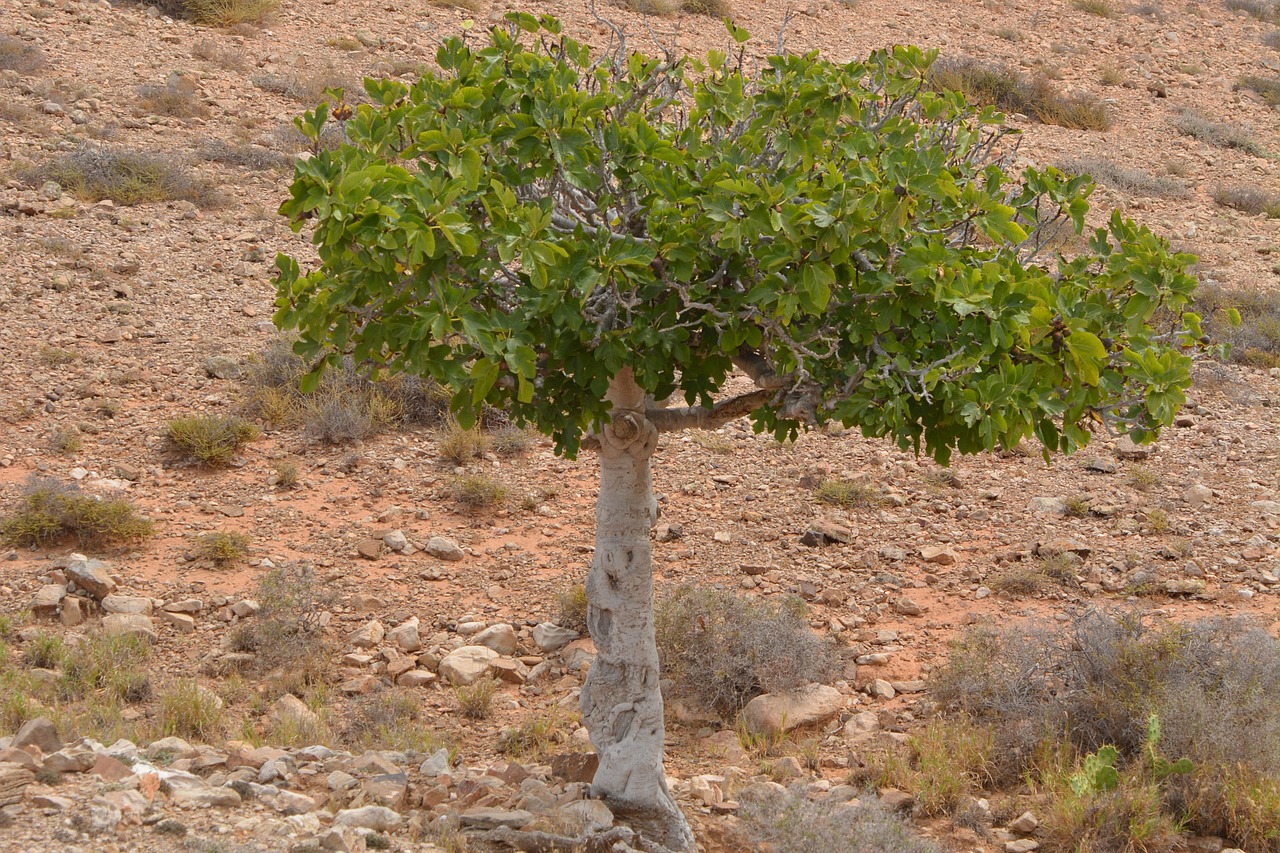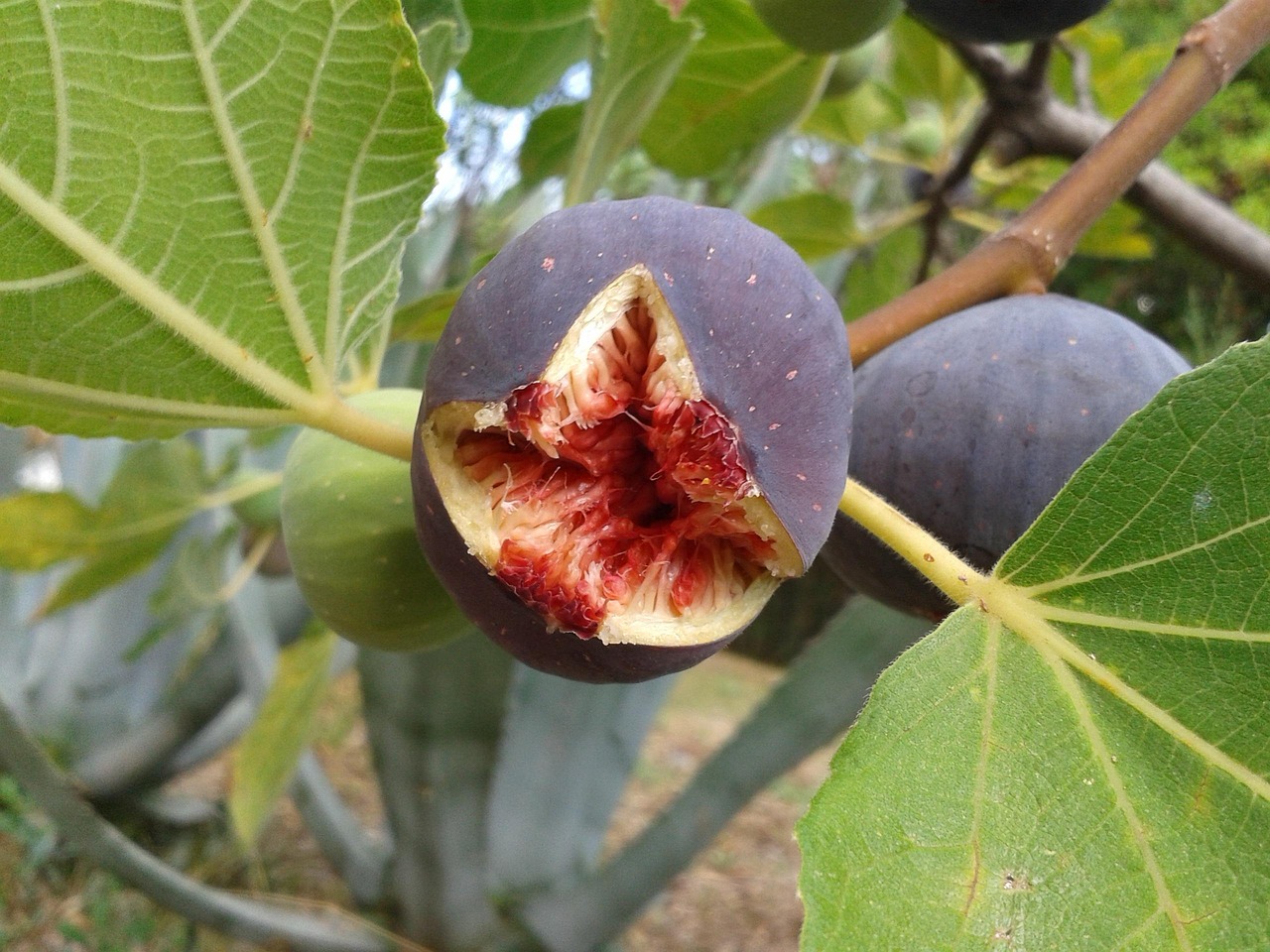The Violette de Bordeaux fig tree generally grows indoors at a moderate rate, reaching about 3 to 5 feet in height within a few years under optimal conditions, including proper light, water, and temperature management.
The Violette de Bordeaux fig tree is a popular choice among indoor gardeners. Known for its sweet, dark purple figs and attractive foliage, this variety thrives with the right care. Fig trees are generally hardy and can adapt to various environments, making them suitable for indoor growth. However, understanding their growth rate and needs is essential for successful cultivation.

One of the key factors influencing the growth rate of the Violette de Bordeaux fig tree indoors is light exposure. These trees require bright light to thrive. Ideally, they should receive at least 6 to 8 hours of direct sunlight daily. Insufficient light can lead to slower growth and poor fruit production.
Watering practices also play a significant role in the growth rate of indoor fig trees. The Violette de Bordeaux prefers well-draining soil. Overwatering can lead to root rot, while underwatering can stress the plant. A good rule of thumb is to allow the top inch of soil to dry out before watering again. This balance helps maintain healthy growth.
Factors Influencing Growth Rate
Several factors contribute to the growth rate of the Violette de Bordeaux fig tree when grown indoors. Understanding these factors can help you create an optimal environment for your tree.

- Light: As mentioned earlier, adequate light is crucial. South-facing windows are ideal for maximizing sunlight exposure.
- Temperature: These trees prefer temperatures between 65°F and 75°F. Avoid placing them in drafty areas or near heating vents.
- Humidity: Fig trees thrive in higher humidity levels. Consider using a humidifier or misting the leaves regularly.
- Soil: A well-draining potting mix designed for fruit trees is recommended. Good drainage is essential to prevent root issues.
- Fertilization: Regular fertilizing during the growing season can enhance growth. Use a balanced fertilizer every 4-6 weeks when the tree is actively growing.
Another vital aspect to consider is the size of the pot. A larger pot allows for more root expansion, which can enhance the overall growth rate of your fig tree. However, ensure that the pot has adequate drainage holes to prevent water from accumulating at the bottom.
When growing Violette de Bordeaux figs indoors, you may also want to prune the tree occasionally. Pruning helps maintain its shape and encourages bushier growth. It is best to prune during the dormant season, typically late winter or early spring, before new growth begins.
Growth Expectations
When you start your Violette de Bordeaux fig tree indoors, you can expect a gradual increase in height and overall size. Typically, young trees may grow around 12 to 24 inches in their first year if provided with the right conditions. As they mature, their growth may accelerate slightly depending on how well you manage their environment.

| Age of Tree | Height (inches) |
|---|---|
| 1 Year | 12-24 |
| 2 Years | 24-36 |
| 3-5 Years | 36-60 |
The Violette de Bordeaux fig tree can produce fruit once it reaches maturity, usually between 2 to 3 years after planting. The quality and quantity of fruit will depend on how well you provide for its needs throughout its growth stages.
In summary, with proper care and attention to factors such as light, temperature, humidity, and soil conditions, the Violette de Bordeaux fig tree can thrive indoors. This beautiful plant not only adds elegance to your home but also rewards you with delicious figs as it matures.
Common Challenges in Growing Violette de Bordeaux Fig Trees Indoors
While the Violette de Bordeaux fig tree is relatively easy to care for, there are several challenges that indoor gardeners may face. Being aware of these potential issues can help you take proactive measures to ensure your tree thrives.
Pests and Diseases
Pests and diseases can hinder the growth and health of your fig tree. Common pests include:

- Spider Mites: These tiny pests thrive in dry conditions and can cause leaf discoloration.
- Scale Insects: They appear as small bumps on stems and leaves and can weaken the plant.
- Mealybugs: These pests leave a cottony residue on the leaves and can lead to unhealthy growth.
To manage pests, regularly inspect your tree for any signs of infestation. If you notice pests, consider using insecticidal soap or neem oil as organic solutions. For diseases, root rot is a common issue caused by overwatering or poor drainage. Ensuring good drainage in the potting mix is vital to prevent this problem.
Environmental Stressors
Indoor environments can be unpredictable. Factors such as temperature fluctuations and humidity levels can affect the growth of your fig tree. For example, placing the tree near heating vents or air conditioning units can expose it to drafts, leading to stress.
To mitigate environmental stress, consider the following tips:
- Maintain consistent temperatures between 65°F and 75°F.
- Avoid sudden changes in temperature when moving the tree.
- Use a humidity tray or humidifier to keep moisture levels up, especially in winter.
Optimal Care Practices for Healthy Growth
Caring for your Violette de Bordeaux fig tree involves several key practices that promote healthy growth and fruit production. Implementing these care techniques will create a favorable environment for your tree.
Watering Techniques
Watering is crucial for the health of your fig tree. Here are some best practices:
- Check Soil Moisture: Use your finger to check if the top inch of soil is dry before watering.
- Avoid Waterlogging: Ensure that excess water drains out of the pot to prevent root rot.
- Water Quality: Use room temperature water, preferably rainwater or distilled water, to avoid harmful chemicals.
Fertilization Schedule
Fertilizing your fig tree during its growing season is essential for nutrient replenishment. Here’s how to do it effectively:
- Select the Right Fertilizer: Use a balanced fertilizer with equal parts nitrogen, phosphorus, and potassium.
- Frequency: Fertilize every 4 to 6 weeks during spring and summer. Reduce or stop fertilizing during fall and winter.
- Application Method: Follow package instructions for dosage and application methods to avoid over-fertilization.
Pruning and Training Your Fig Tree
Pruning is an important aspect of fig tree care that promotes healthy growth and optimal fruit production. Proper pruning techniques will help shape your tree and allow more light to reach all parts of the plant.
When to Prune
The best time to prune your Violette de Bordeaux fig tree is during its dormant season, typically in late winter or early spring before new growth begins. This timing helps minimize stress on the plant.
Pruning Techniques
Here are some pruning techniques to consider:
- Remove Dead or Diseased Wood: Cut away any branches that appear dead or diseased to promote overall health.
- Shape the Tree: Trim back excessive growth to maintain a manageable size and encourage bushiness.
- Thin Out Crowded Branches: Ensure good air circulation by removing branches that are too close together.
Understanding Fruit Production
The production of figs is a rewarding aspect of growing the Violette de Bordeaux indoors. However, several factors influence when and how much fruit your tree will bear.
A mature fig tree typically produces two crops per year: the first crop appears in early summer and the second in late summer or early fall. The quantity of fruit can vary based on plant health, environmental conditions, and care practices.
| Age of Tree | Crops Per Year | Approximate Yield (Figs) |
|---|---|---|
| 2 Years | 1 | 5-15 |
| 3-5 Years | 2 | 20-50 |
| 5+ Years | 2 | 50-100+ |
The Violette de Bordeaux fig tree not only adds beauty to your home but also provides delicious fruits with proper care. Regular attention to its needs will reward you with fruitful yields and a thriving indoor garden experience.
Best Varieties of Fig Trees for Indoor Growth
While the Violette de Bordeaux fig tree is an excellent option for indoor gardening, there are other fig tree varieties that can also thrive indoors. Each variety has unique characteristics, growth habits, and fruiting potential. Understanding these differences can help you select the best tree for your indoor garden.
Popular Indoor Fig Varieties
Here are some recommended fig tree varieties that are well-suited for indoor growth:
- Brown Turkey: Known for its adaptability, the Brown Turkey fig produces sweet, medium-sized figs. It can grow to about 4-5 feet indoors and is relatively low-maintenance.
- Celeste: This variety is perfect for small spaces. Celeste figs are small, sweet, and have a rich flavor. The tree typically grows to about 3-4 feet indoors.
- Little Miss Figgy: A dwarf variety, this tree reaches only 2-3 feet in height. Little Miss Figgy is ideal for container gardening and produces delicious figs that are great for snacking.
- Chicago Hardy: This hardy variety is well-suited for cooler climates and can tolerate lower temperatures. It grows about 4-6 feet tall and produces sweet, rich figs.
Container Gardening Tips for Indoor Fig Trees
Growing fig trees in containers is an effective way to manage their growth and care requirements. Container gardening provides flexibility in moving your plants to optimize light exposure and temperature conditions. Here are some essential tips for successful container gardening with Violette de Bordeaux and other fig trees.
Choosing the Right Container
Selecting the proper container is vital for the health of your fig tree. Consider the following factors:
- Size: Choose a container that is at least 12-18 inches in diameter for young trees. As the tree grows, you may need to transfer it to a larger pot.
- Material: Clay pots are excellent for drainage but can dry out quickly. Plastic pots retain moisture better but may require additional drainage holes.
- Drainage: Ensure your container has sufficient drainage holes to prevent water accumulation, which can lead to root rot.
Soil Requirements
The type of soil you use plays a significant role in the growth of your fig tree. Here are some recommendations:
- Well-Draining Soil: Use a high-quality potting mix designed for fruit trees or create your own blend with equal parts potting soil, perlite, and compost.
- pH Level: Fig trees prefer slightly acidic to neutral soil with a pH between 6.0 and 7.0. Testing your soil can help you maintain the right conditions.
- Aeration: Incorporating materials like perlite or sand can improve aeration and drainage, ensuring healthy root development.
Understanding Light Requirements for Indoor Figs
Light is one of the most critical factors affecting the growth rate of indoor fig trees. Insufficient light can lead to slow growth and poor fruit production. Here’s how to ensure your Violette de Bordeaux fig tree receives adequate light.
Natural Light Considerations
When placing your fig tree indoors, consider the following tips regarding natural light:
- South-Facing Windows: Position your fig tree near a south-facing window to maximize sunlight exposure throughout the day.
- Rotating the Plant: Rotate the tree every few weeks to ensure even light distribution on all sides, promoting balanced growth.
- Avoid Obstructions: Keep curtains or blinds open during daylight hours to allow full sunlight into the room.
Supplemental Lighting Options
If natural light is insufficient, consider using supplemental grow lights. Here are some options:
- LED Grow Lights: These are energy-efficient and produce minimal heat, making them ideal for indoor gardening.
- Fluorescent Lights: T5 fluorescent lights are suitable for growing plants indoors and can provide the necessary spectrum for healthy growth.
- Placement: Position grow lights about 12-24 inches above the plant, ensuring they run for 12-16 hours each day during the growing season.
The Role of Temperature in Fig Tree Growth
The Violette de Bordeaux fig tree thrives in specific temperature ranges, which can significantly influence its growth rate and fruit production. Understanding how to maintain optimal temperatures will help you achieve healthier plants.
Ideal Temperature Range
The ideal temperature for indoor fig trees is typically between 65°F and 75°F. However, they can tolerate short periods outside this range. Here are some guidelines:
- Daytime Temperatures: Maintain daytime temperatures within the optimal range to encourage active growth.
- Nighttime Temperatures: Nighttime temperatures should not drop below 50°F, as colder conditions can cause stress to the plant.
- Avoid Sudden Changes: Gradual changes in temperature are less stressful for your fig tree compared to sudden fluctuations.
By following these guidelines and understanding the specific needs of your Violette de Bordeaux fig tree, you can create an ideal environment that promotes healthy growth and abundant fruit production indoors.
Additional Considerations for Indoor Fig Tree Care
In addition to the factors already discussed, there are several additional considerations for successfully growing a Violette de Bordeaux fig tree indoors. These include repotting, seasonal care, and long-term maintenance strategies.
Repotting Your Fig Tree
As your fig tree grows, it may become root-bound, meaning its roots will fill the container and restrict growth. Repotting is essential to ensure continued healthy growth. Here are some guidelines for repotting:
- When to Repot: Consider repotting every 1-2 years, especially if you notice roots growing out of the drainage holes or if the plant appears stunted.
- Size of New Pot: Choose a pot that is one size larger than the current one. This allows room for growth without overwhelming the plant.
- Care During Repotting: Gently remove the tree from its current pot, taking care not to damage the roots. Trim any dead or damaged roots before placing the tree in the new pot with fresh soil.
Seasonal Care Adjustments
Fig trees have different needs throughout the year. Adjusting your care routine with the changing seasons can greatly benefit your tree:
- Spring: This is the active growing season. Increase watering and begin a regular fertilization schedule to support new growth.
- Summer: Continue to provide adequate water and light. Be vigilant about pests, as they tend to thrive in warmer months.
- Fall: As temperatures begin to cool, reduce watering slightly and stop fertilizing as the tree prepares for dormancy.
- Winter: Maintain lower humidity levels and reduce watering further. Position your fig tree in a cooler area with indirect light to simulate its natural dormant period.
Long-Term Maintenance Strategies
A successful indoor fig tree requires ongoing maintenance beyond basic care. Consider implementing these long-term strategies:
- Monitoring Health: Regularly inspect your fig tree for signs of stress, pests, or disease. Prompt action can prevent larger issues.
- Adjusting Light and Temperature: Be flexible in moving your fig tree based on seasonal changes in light and temperature conditions.
- Documenting Growth: Keep a journal of your fig tree’s growth, including changes in height, leaf health, and fruit production. This will help you understand its specific needs better.
Final Thoughts
The Violette de Bordeaux fig tree is an excellent choice for indoor gardening enthusiasts looking to cultivate a beautiful and productive plant. With its moderate growth rate, delicious fruit, and attractive foliage, it brings both aesthetic value and culinary delight to your home.
By understanding the key factors influencing growth—such as light, temperature, watering practices, soil quality, and pest management—you can create an optimal environment for your fig tree. Additionally, being aware of common challenges and how to address them will enhance your gardening experience.
Caring for a Violette de Bordeaux fig tree indoors is a rewarding journey that can lead to fruitful yields and a thriving indoor garden. Whether you’re a seasoned gardener or a beginner, this fig tree can thrive with proper attention and care. Enjoy the fruits of your labor as you watch your indoor garden flourish!
